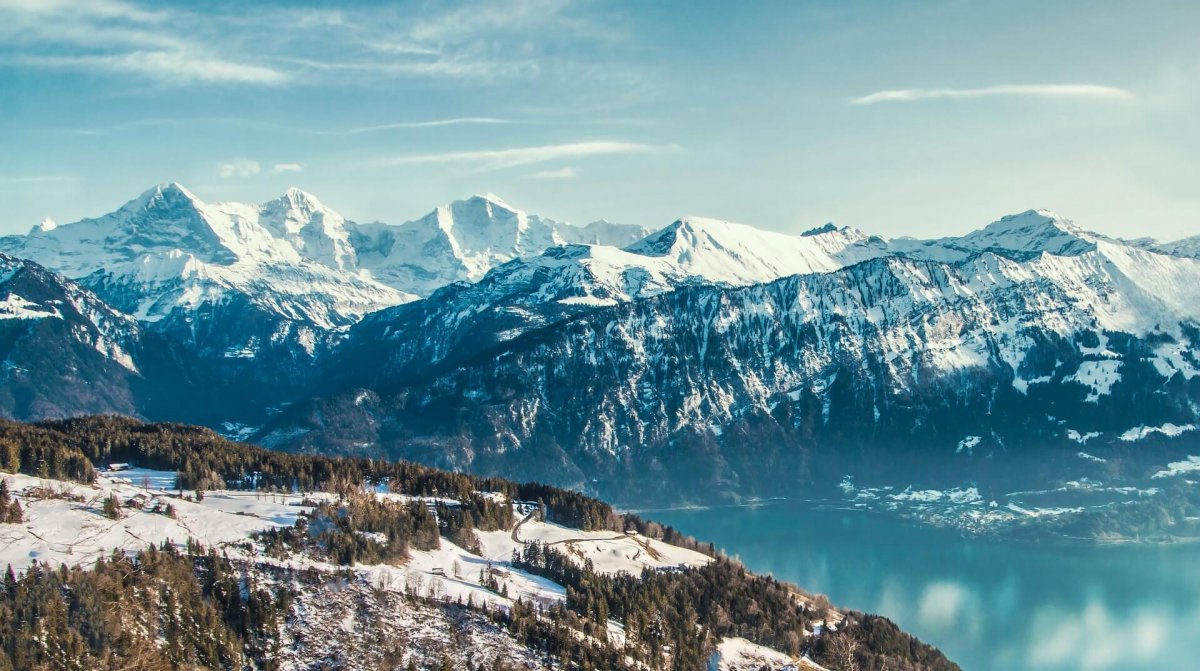Chocolate, cheese and watches, rich history and traditions, stunning nature and beautiful architecture, where centuries old and new blends effortlessly together, financial stability and prosperity and so on and on – Switzerland is rich in so many things it’s hard to count, but its main treasure, without a doubt, is the Swiss Alps.
Mountains, the Swiss Alps, – that’s the first association that comes to mind when anyone thinks of Switzerland. Skiing, tracking or just admiring, the mountains and everything to come with them make it understandable, why Switzerland is number one destination for honeymoons and vacation trips all year round, a perfect place for dare-devils to have a challenging climb or totally get off on a nice free ride down a steep slope and the most famous resort country in the world.
How has Switzerland come to be the most famous mountain resort country in the world?
Switzerland, being a country of so many inventions and firsts, was, unsurprisingly, the first country to build a mountain resort. An unquenchable interest towards mountains and especially the Alps, sparked after the surmounting of Mont Blanc, pushed the Swiss to realize that mesmerizing nature abundant in Switzerland thanks to multiple Alpine peaks and ranges, a great many of which remain snow-covered even in summer, in addition to vast valleys with lush meadows and wonderful lakes and, of course, quaint cities with beautiful architecture on their shores is a true heaven sent.
If there aren’t any substantial natural resources of economic value like gas, oil or gold with diamonds, there’s beautiful nature and ample space and possibilities for active pastime and sports as well as more passive rest and recreation on peaceful locations, with fresh air and healing mineral and thermal waters. And that could attract no less people than Swiss famous banking system. This thought, combined with ingenious approach and so characteristically Swiss efficiency and strive for perfection, predictably gave its fruition. For many previous decades slowly turning into centuries these riches have lured numerous tourists and visitors from all over the continent and the world and continue to do so even more nowadays.
Why the sport of alpinism is called so and what do the Alps have to do with it?
Probably not many wondered why the term alpinism is actually called alpinism. Though the first attempts to surmount mountains date back for as long as almost 700 years, with famous Italian poet Petrarch becoming the first known alpinist after the climb to the summit of 1,912m Mount Ventoux overlooking the Bay of Marseilles on April 26, 1336. What was an action, inspired by Philip V of Macedon’s ascent of Mount Haemo, destroyed the superstitions about the forbidden sacristy of mountains that many cultures have harbored because of their proximity to heaven.
The first recorded climb of any technical difficulty, which, in fact, marks the beginning of mountaineering, was made by Antoine de Ville, lord of Domjulien and Beaupré, who ascended the Mont Aiguille (2,085 m) in the French Prealps, with a little team, using ladders and ropes in 1492.
The next important mountain climbed was Mont Blanc (the highest mountain in the Alps and the highest in Europe after the Caucasus peaks rising 4,808 m (15,774 ft) above sea level and ranking 11th in the world in topographic prominence) by Jacques Balmat and his guide Michel-Gabriel Paccard in 1786, following multiple attempts made by Swiss scientist Horace-Bénédict de Saussure.
Commemorating that event, in the 19th century the sport and leisure activity of mountaineering – climbing with difficulty such high and often snow and ice-covered mountains as the Alps for the purpose of enjoying climbing itself – has got a name Alpinism and a person possessing necessary skills and doing the climbing is called an Alpinist.
What Swiss researcher is considered to be “The Father of Alpinism”?
The aforementioned first Mont Blanc climb was organized by a very famous Swiss geologist, meteorologist, physicist, mountaineer and Alpine explorer Horace- Benedict de Saussure (1740-1799). Having made it his life goal to climb Mont Blanc, the scientist had devoted a great part of his life to exploring the mountain and finding the right route to the top. Notwithstanding his efforts, all the expeditions ended in failure. Then he decided to initiate a competition with a reward prize to those who manage to reach the summit. With his help Jacques Balmat and Michel-Gabriel Paccard finally succeed in this task. Thus, Horace-Benedict de Saussure went down in history as the founder of alpinism (and modern meteorology in addition to this). There’s even a monument to the duo of Jacques Balmat (1762-1834) (left) and Horace-Benedict de Saussure (1740-1799) in Chamonix.
